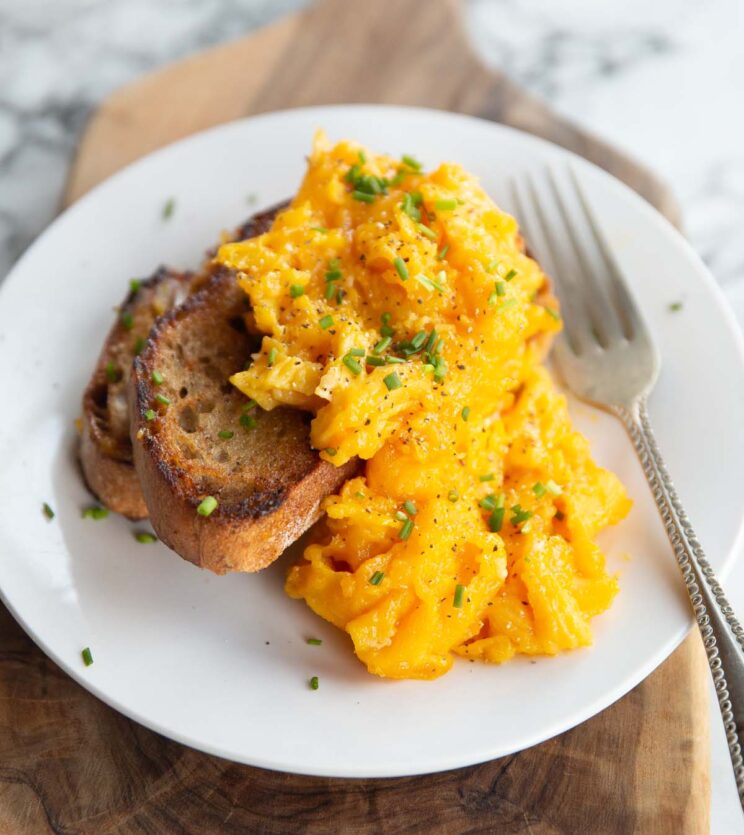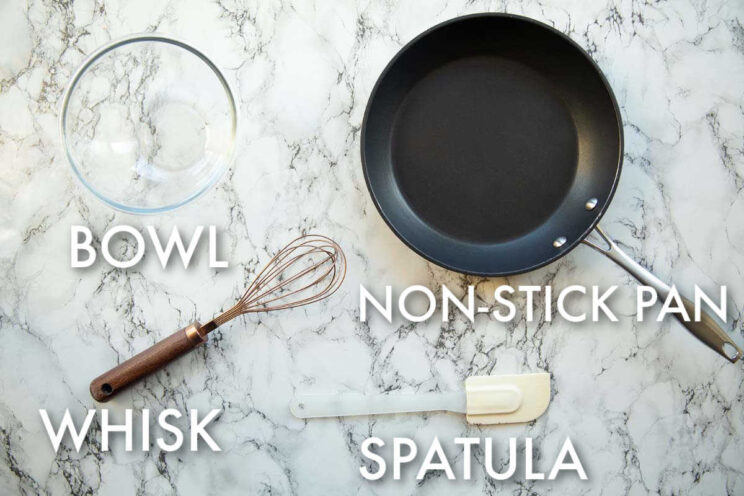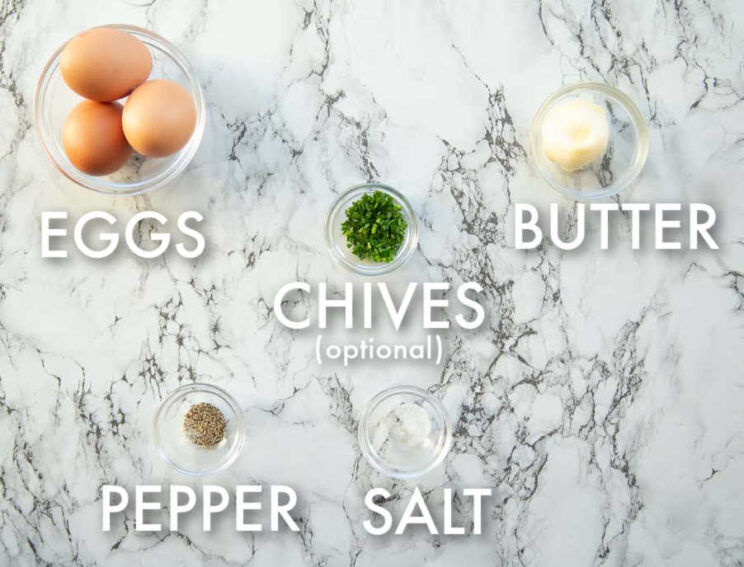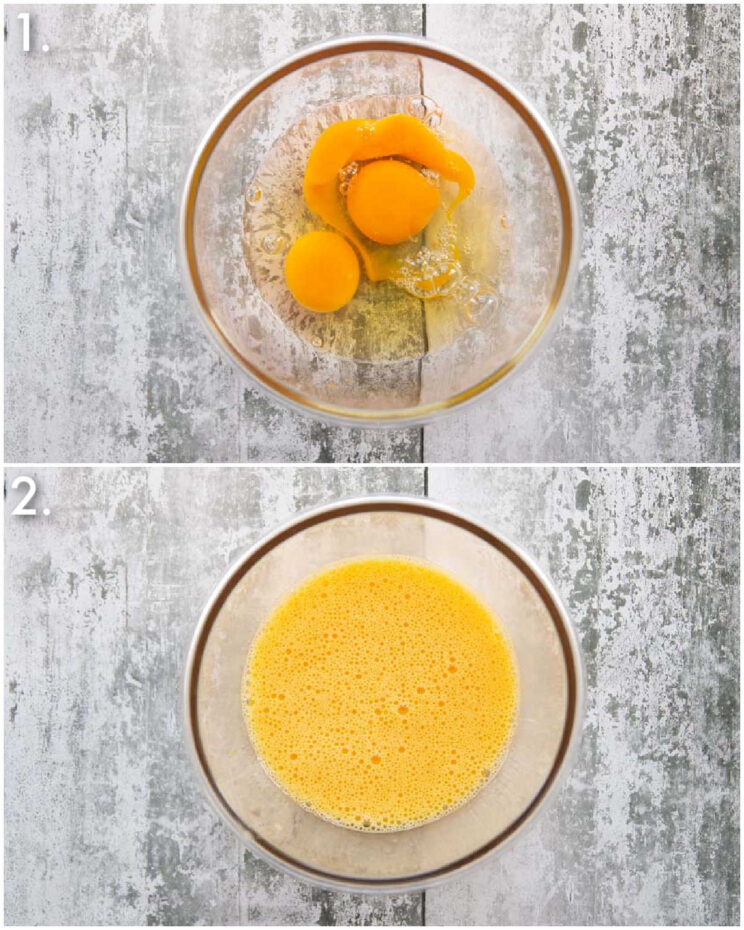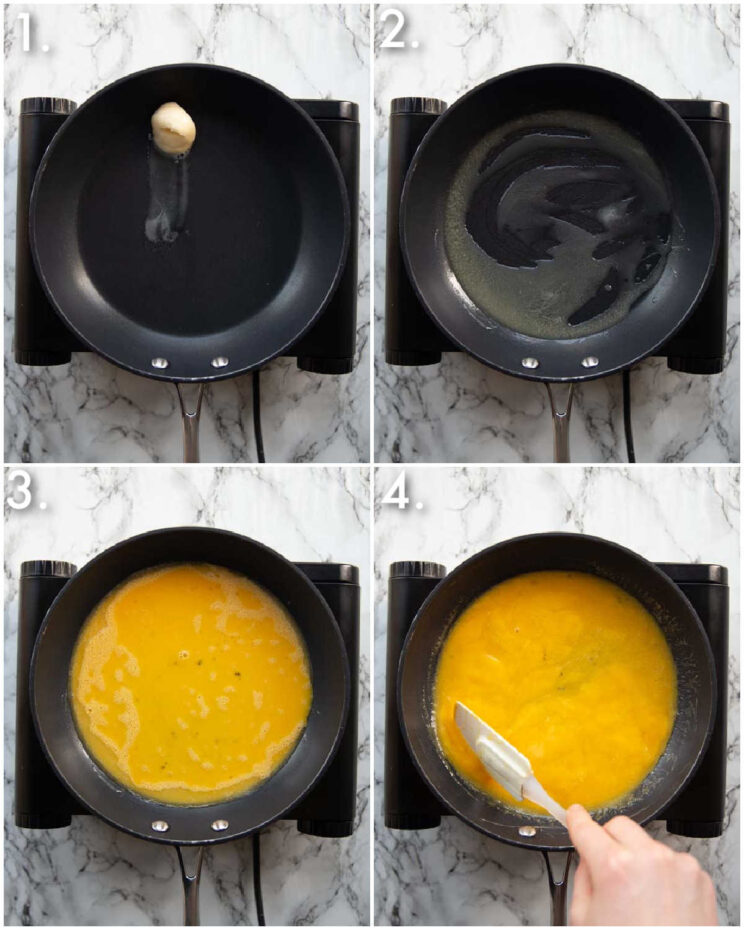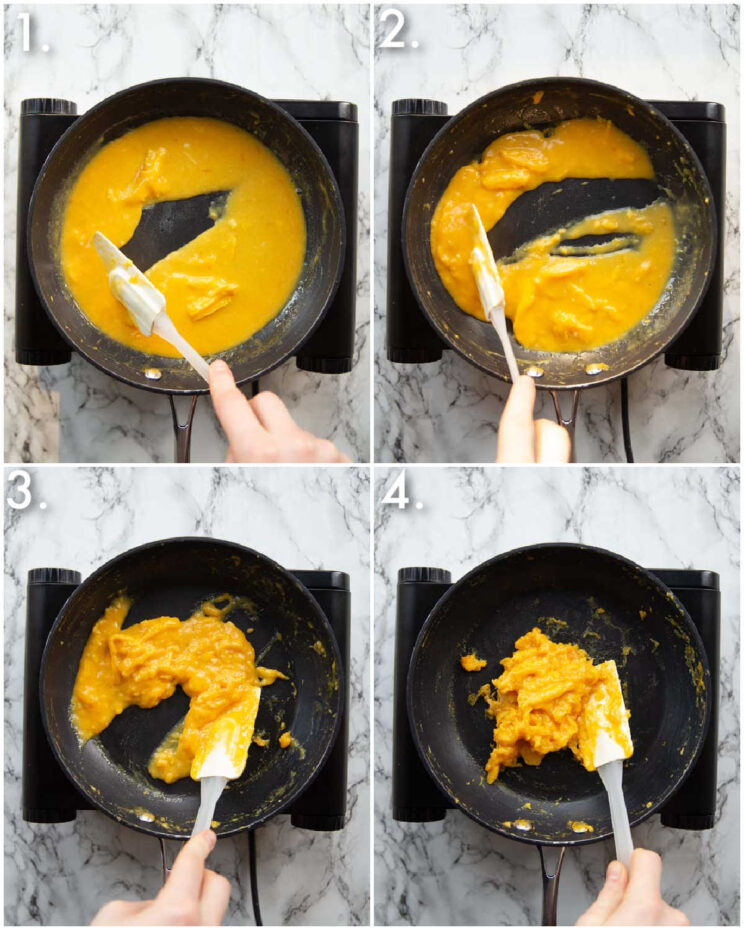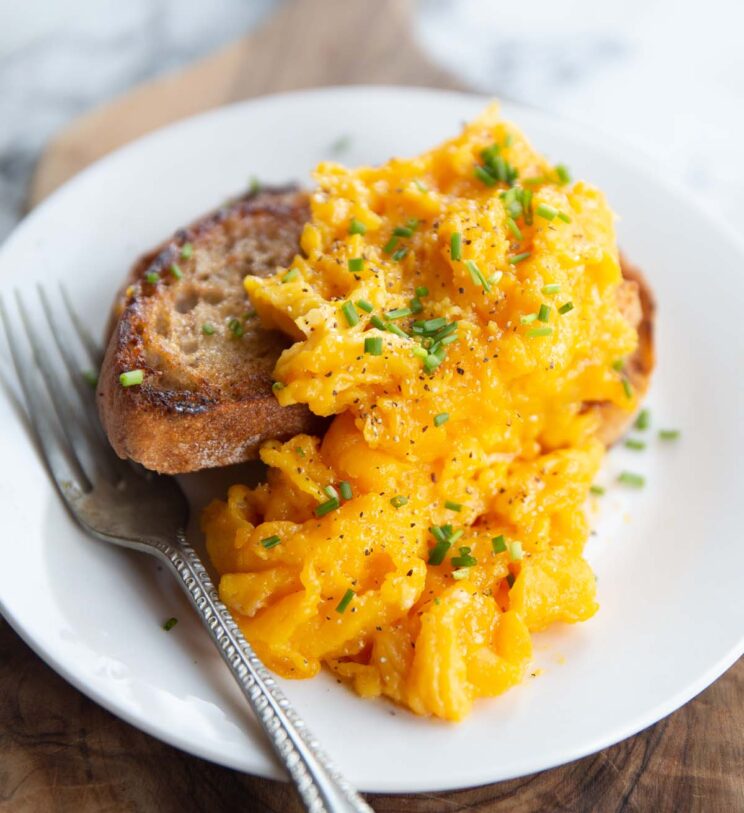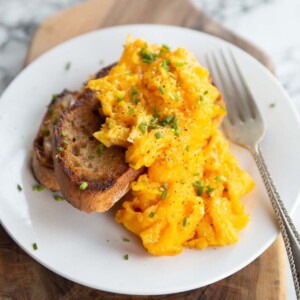I know what you’re thinking, ‘who doesn’t know how to make scrambled eggs?’ and granted, it is difficult to stuff up. However, whilst there isn’t strictly a wrong or right way to cook scrambled eggs, there is the best way. Follow me…
The BEST Scrambled Eggs
For me, the best scrambled eggs are soft and creamy. They’re rich in flavour and moist in texture. There’s nothing worse than rubbery scrambled eggs that are so overworked they look like rabbit food! For so long I made scrambled eggs by beating the heck out of them in a pan over high heat. However, great scrambled eggs take time and a low heat, which we’ll get into in just a sec.
What equipment do you need to make scrambled eggs?
Non-Stick Pan – This is essential to ensure the eggs doesn’t catch on the pan. Whisk – To beat the eggs. Bowl – Or jug. Just something to beat the eggs in. Spatula – Better than a wooden spoon so you can cover all the pan and make sure no egg gets caught.
Can you make scrambled eggs in a cast iron skillet?
Technically yes, if it’s well seasoned so the eggs don’t stick, but cast iron skillets are really for cooking at high heat. Here we want to cook on the lowest heat possible, so I don’t recommend using a cast iron skillet. It can also discolour the eggs.
Scrambled Egg Ingredients
As you can imagine, there’s really not much to it. Here’s what you’ll need:
Eggs – Large and as fresh as possible. Butter – Preferably unsalted, but salted can be used. Just adjust your seasoning as needed. Salt – To taste. Pepper – To taste. Chives – Optional, but they do add a pop of colour and flavour for serving.
Do you put milk in scrambled eggs?
You absolutely do not need to add milk to scrambled eggs. This method will give you rich and creamy eggs without it. The butter also helps!
How many eggs should you scramble for one person?
Generally speaking 3 eggs per person works great.
Preparing Scrambled Eggs
The easiest way to get the smoothest eggs is beating with a whisk. You can use a fork, just requires a bit more elbow grease.
Scrambled Egg Seasoning
The next stage is seasoning, which seems to be a controversial topic among the scrambled egg experts. Firstly, no black pepper (at this point), it will discolour the eggs and turn them a little grey. Save the pepper for the end. Salt on the other hand can be put in at the start. Contrary to popular belief I actually found that this improved the texture of the egg. It’s commonly suggested that adding salt to eggs promotes coagulation which in turn promotes that rubbery texture you don’t want. I found that the salt actually helps retain moisture in the eggs and keeps them moist. Here’s a neat little explanation of pre-salting eggs.
Making Scrambled Eggs
When making scrambled eggs just think: Low – and – slow. Cooking the eggs on a low heat over a long period of time will give you that smooth velvety texture and the creamy taste you’re after. You actually want the eggs to catch on the pan as little as possible. Start off by melting the butter. Don’t let it brown or it’ll discolour the eggs. Then in goes the beaten eggs and begin gently stirring in long strides.
Keeping the heat low, you’ll slowly start to see the eggs catch on the pan (seen in the photos below). Like I said this is something you want to try and avoid. So with your spatula stir until the eggs turn into a thick, custardy consistency. At this point you’ll see small curds start to form. Start scraping the eggs in a circular motion to start forming long curds. You want the eggs to be nearly cooked when you take them off the heat. Eggs, especially scrambled eggs, are hugely susceptible to carryover cooking. So whilst the eggs are slightly soft but still a little runny, take them off the heat.
Serving Scrambled Eggs
When it comes to serving, I think simplicity is key. Gordon Ramsay stirs in a tbsp of Crème Fraîche, which I have tried, but honestly I think they’re perfect without. However I do like his tip of sprinkling a touch of fresh chives. Now is also when you’d add your black pepper. You also want some nice bread, don’t ruin those gorgeous eggs with some tough old bread you found in the cupboard. Champion those eggs on a bed of your favourite bread. Here I use toasted ciabatta. And for the love of god please no ketchup. Looking for more ways to serve scrambled eggs? Check out these recipes:
Breakfast Burritos Breakfast Grilled Cheese Breakfast Croissants Chorizo Scrambled Eggs Cheesy Scrambled Eggs
Alrighty, let’s tuck into the full recipe for these scrambled eggs shall we?!
How To Make The Best Scrambled Eggs (Full Recipe)
If you loved these tips for the best scrambled eggs then be sure to Pin for later! Made this recipe? Let me know how you got on in the comments below and pick up your free ecookbook along the way!
